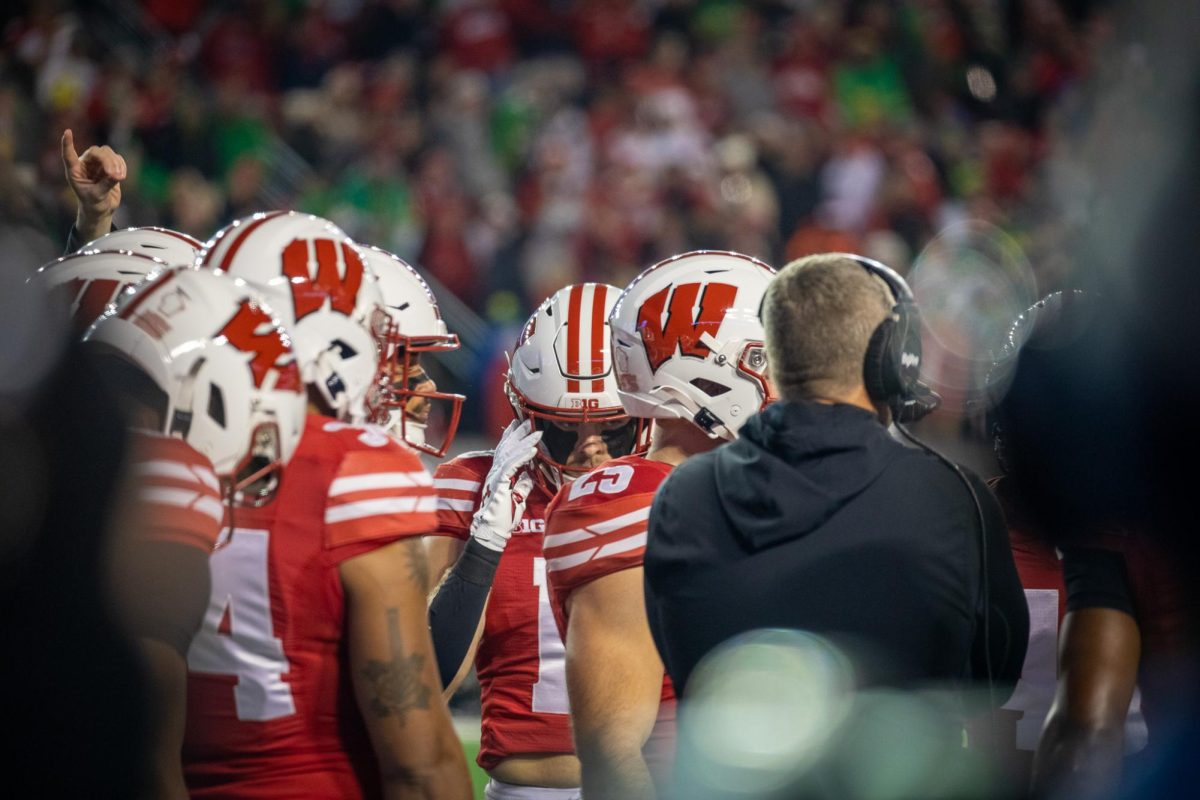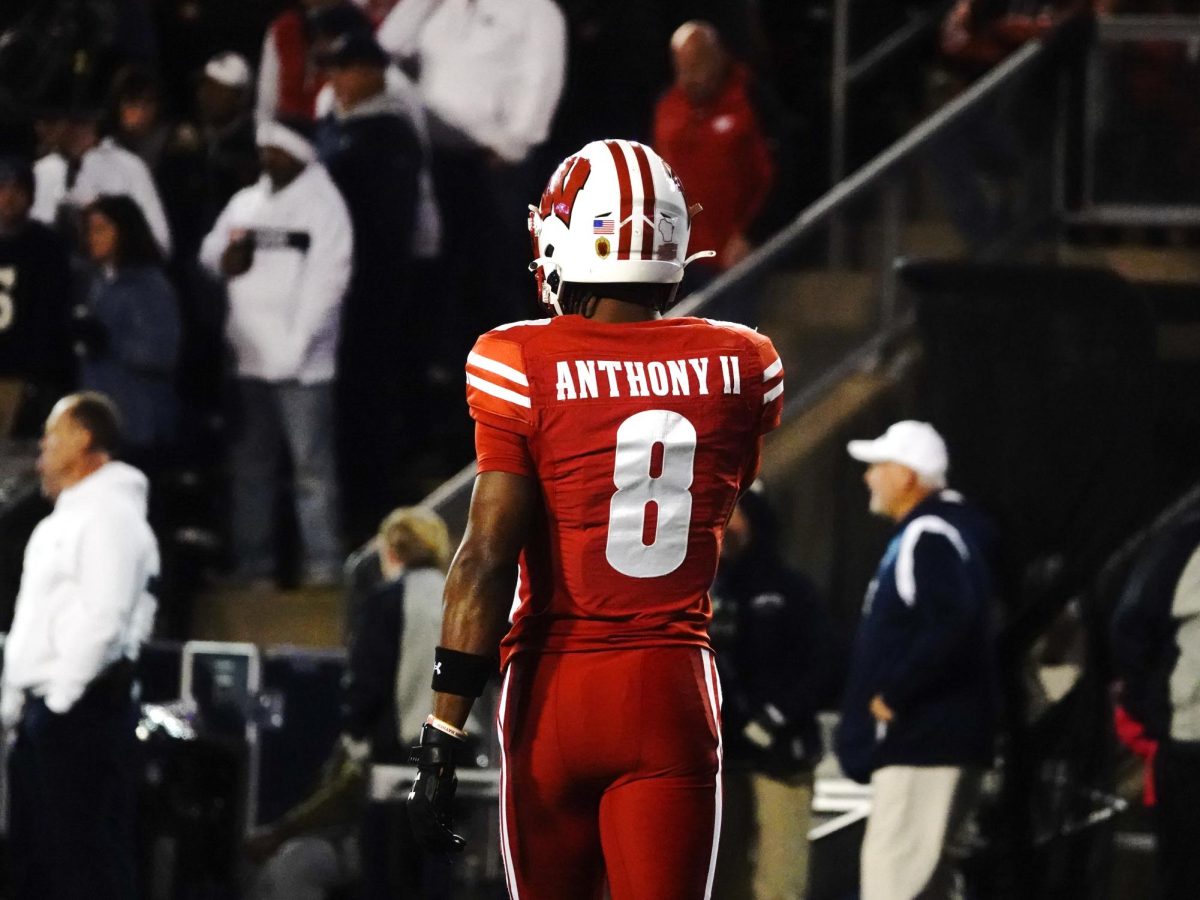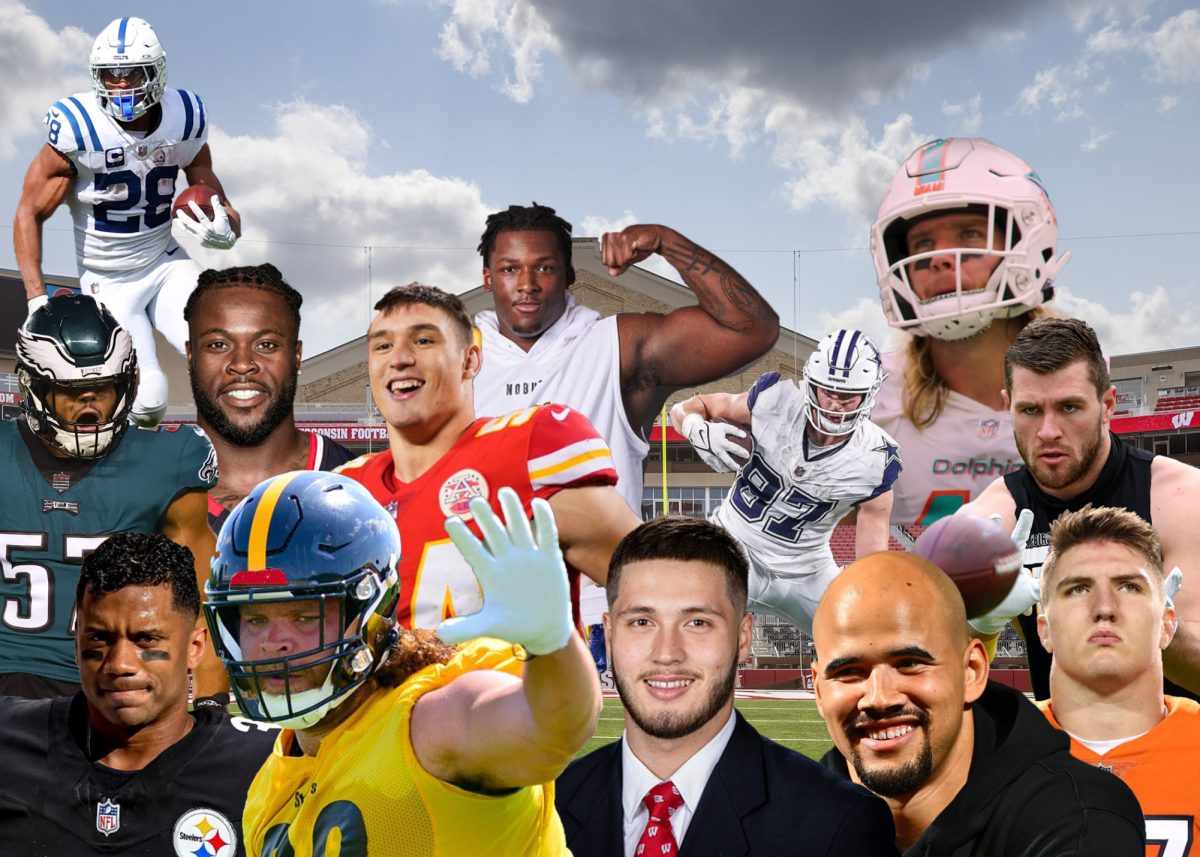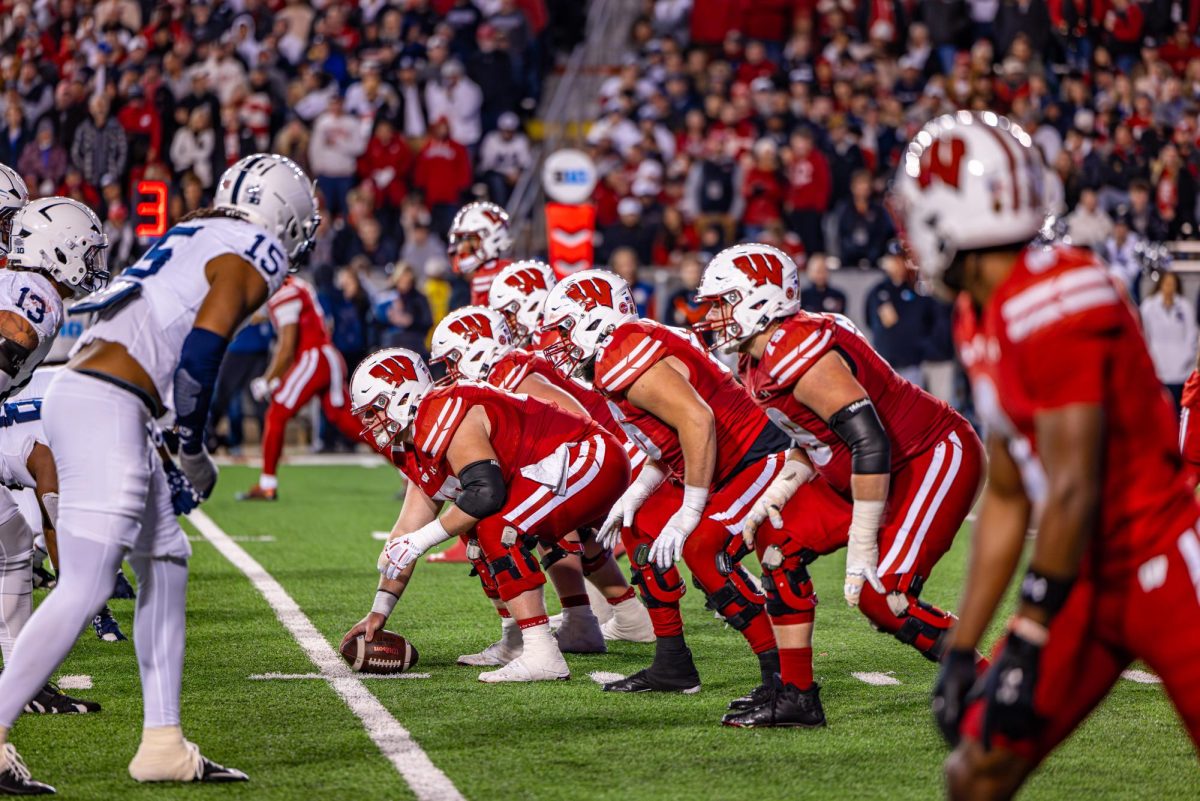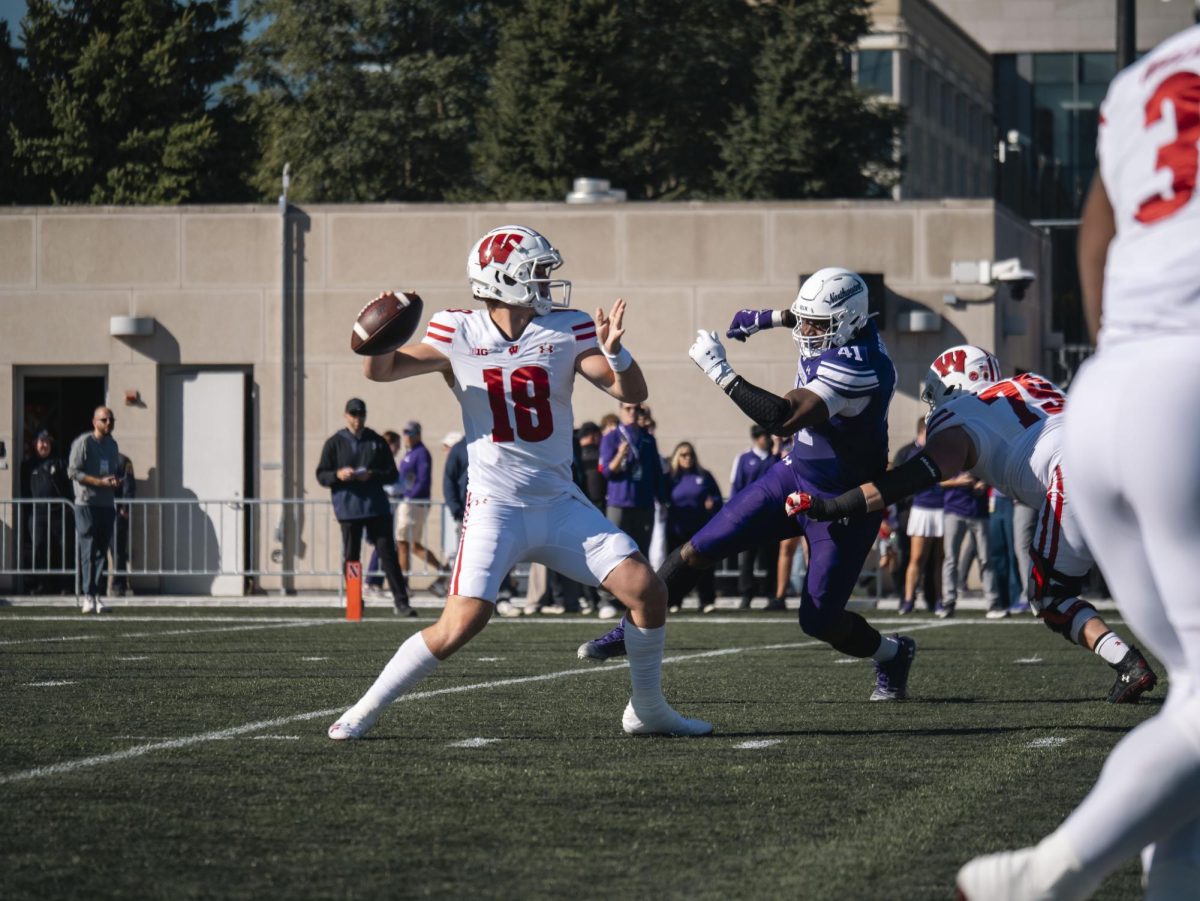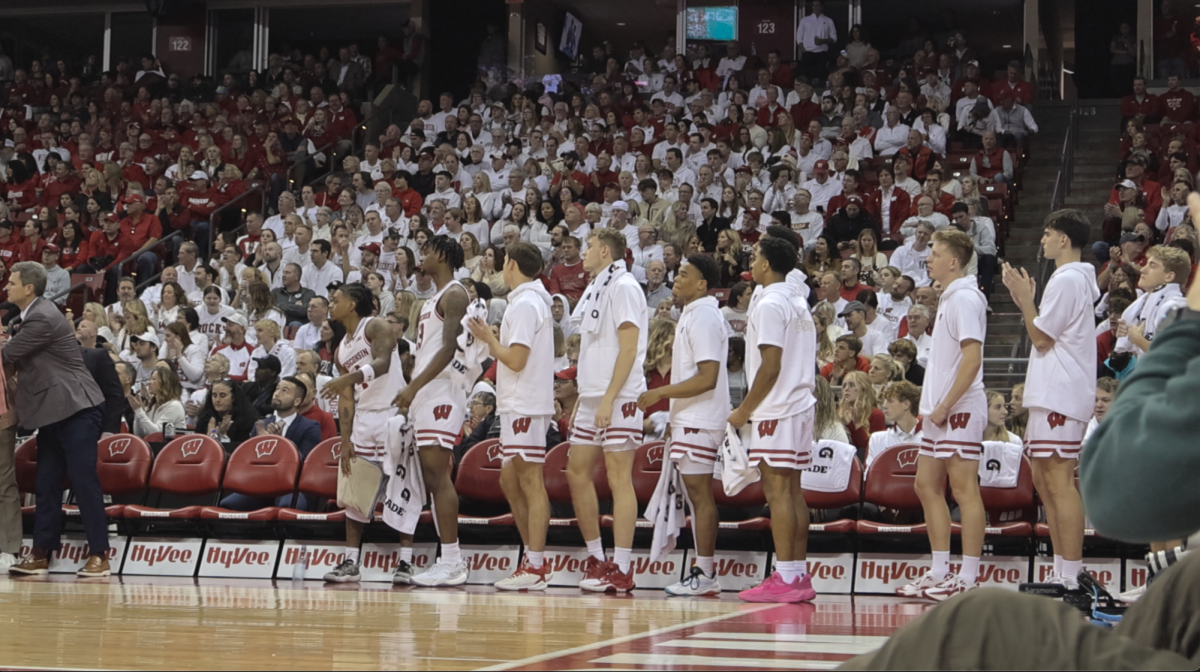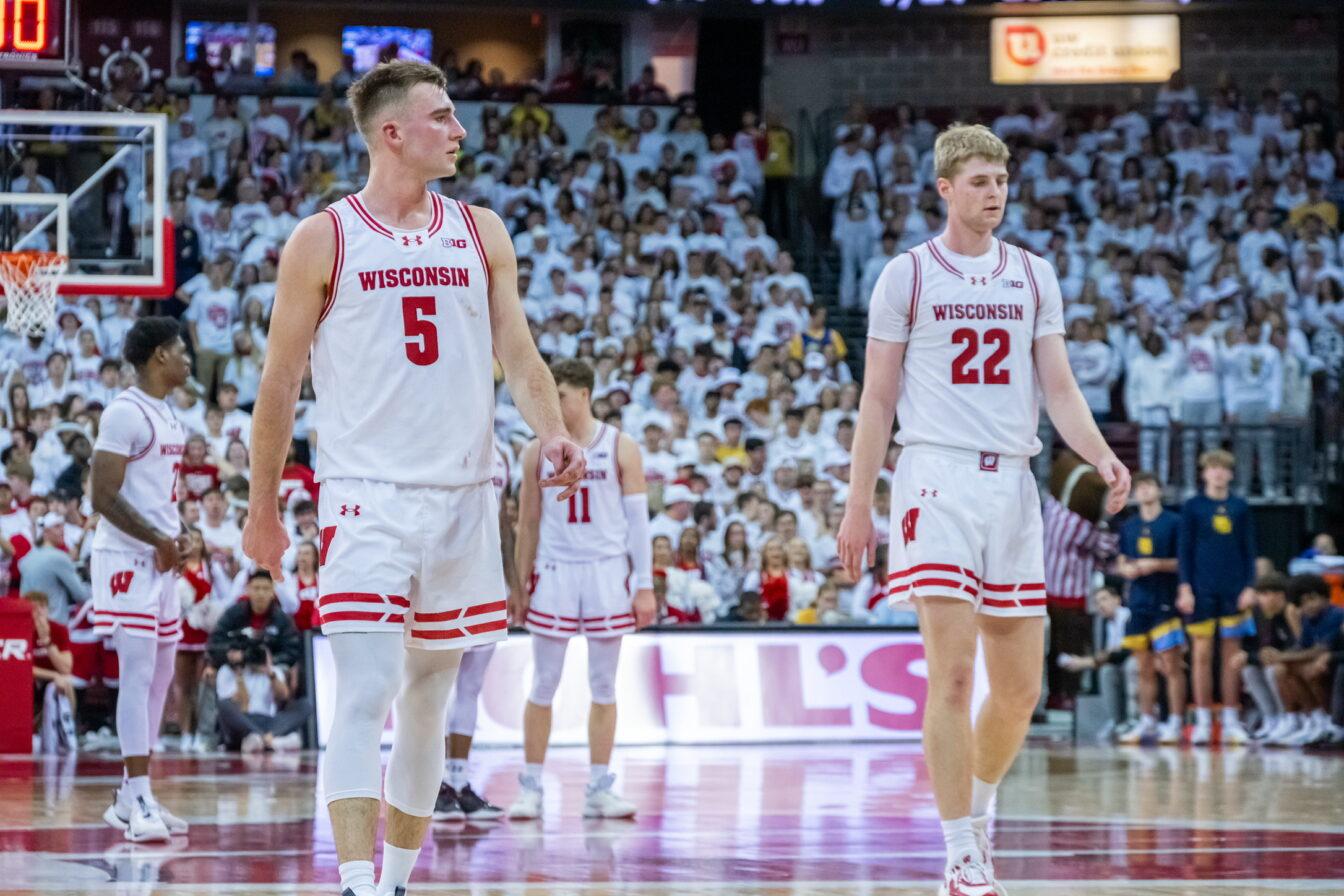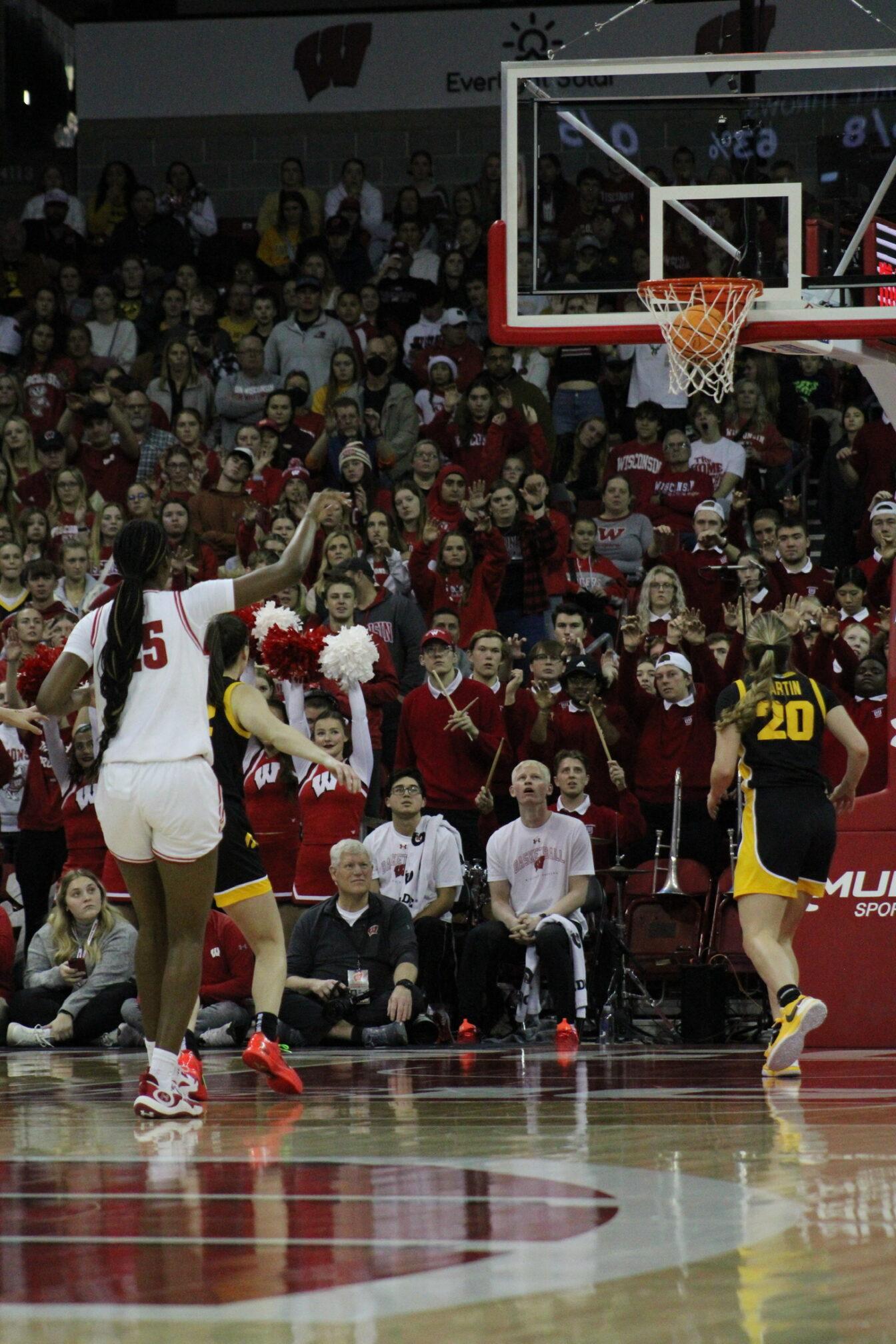Former Wisconsin offensive lineman and NFL Hall of Famer Michael Webster starred on the Super Bowl-winning Pittsburgh Steelers teams of the 1970s, and with 177 consecutive games played to start his career, was best remembered for his grit and toughness — two golden adjectives when it comes to football.
“Iron Mike” died at age 50 from a heart attack after suffering complications from the multiple concussions he sustained in his playing days. By the end of his life, the brain damage to his frontal lobe had led to unemployment and debt, significantly deteriorating his quality of life.
Former Wisconsin wide receiver Al Toon left Wisconsin as one of the most prolific pass catchers in school history to become a first-round pick in the NFL.
After playing eight years in the pros, nine total concussions forced him to retire at age 29.
In more recent Wisconsin history, Kyle Jefferson suffered in 2007 one of the most gruesome concussions that ESPN has ever shown on “SportsCenter” — type Kyle Jefferson into YouTube to view the carnage — and the now-junior receiver has seen his playing time severely decline ever since.
Like most schools, Wisconsin has seen its fair share of problems caused by brain injuries.
This year, the Badgers’ list of victims felled for at least one game by a head injury include All-Big Ten tight end Garrett Graham, running back Zach Brown and full back Bradie Ewing.
“I see myself watching ESPN, and then, if somebody has a concussion, I may look into it,” Brown said. “It just sticks out to me more when I see somebody get a concussion where before, I didn’t really think nothing of it.
“I was nervous to get out there and see how that first hit feels. Just to make sure that I’m OK, because you always hear about how if you get hit again that can put you out for the rest of your career and stuff.”
The process
So, what is the difference between a hit that just leaves you stunned and one that puts a permanent mark on your brain?
Unfortunately, players rarely know the difference.
In Brown’s case, the junior running back played for two more quarters against Ohio State before permanently being pulled from the game.
“The hit that caused the concussion was real early in the game,” Brown said. “It really didn’t put me out until the second half when I got hit again. At first, I definitely didn’t know I had a concussion.”
According to Dennis Helwig, the assistant AD for athletic medicine, Brown’s case is more the rule than the exception, and continuing to play with a concussion before noticing is not uncommon.
“A lot of times we see it first,” Helwig said of concussions suffered during a game. “We are observing the athletes as they come off the sidelines after they collide heads and watching their movements. Sometimes then athletes will self-report.”
“With me, they just noticed I wasn’t the same,” Brown added. “I guess they saw me rocking side to side, not able to focus.”
The treatment
At Wisconsin, treatment for concussions starts the day an athlete dons the cardinal and white.
Along with adjusting to a new city, new classes and new teammates, UW players are given a simple test to be kept on record for their next four years — a neuropsych exam called an “ImPACT test.”
“For all of our contact sports, we do a neuropsych testing called ‘ImPACT,'” Helwig said. “We pre-baseline test all of our athletes that are any way involved in contact sports. So, if they do have an injury, we can go back and look at what their baselines are.”
The day after a brain injury starts a process of checking on symptoms typically associated with concussions, stimulating the body and brain through exercise, and then repeating the whole process over again.
Depending on how severe the injury is, the process can repeat itself multiple times a day for up to a week.
“I just took one test where you rate from one to 10 how your symptoms are feeling,” Brown said. “It’s a one to 10 on certain questions like ‘Are you dizzy, feeling nauseous, headache?’ — stuff like that. Then I would ride the bike for 10 minutes. Then tell them my symptoms.”
After an athlete “passes” the symptoms check, it is time to take yet another “ImPACT test.”
“What we have been finding is a lot of brain activity after a concussion can actually increase your symptoms,” Helwig said. “What we do is monitor the reporting of the symptoms. When those symptoms seem to level off, that is when we will administer the ‘ImPACT’ test again, and we will take a look at that, which really tells us more about how the brain is functioning and how far they are away from baseline. That is usually done after the first 48 hours.”
Once symptoms have returned to normal levels, UW athletes are gradually allowed to return to practice — but only after passing another test each step of the way.
Finally, when the symptoms have completely subsided, the player is allowed to return to full contact.
“Bigger changes over the last five years is there have been some changes in how we manage [concussions],” David Smith, an MD serving a two-year fellowship in sports medicine with an emphasis on concussions, said. “There used to be a couple of rules that we had to follow. … Basically, what they tried to do before is if someone has symptoms ‘x,’ ‘y’ and ‘z,’ you would hold them out longer or shorter. We looked back at those rules and they really aren’t based in anything. Now, if you have a concussion, you will be held out until symptoms are completely gone.”
For Brown, it took a week to return to the practice field and three games before he touched the ball again.
The junior laughed when he recalled all the tests he had to go through before being cleared to play again.
To this point, Brown says he hasn’t felt any recurring symptoms.
“With me, I waited a whole week [before contact],” Brown said. “It took a whole week for my symptoms to go away and for me to feel like I was ready to hit again.”
Hopeful prevention
Pleasant for most of the discussion, Helwig only flares up when it is suggested concussions becoming a recent “hot button” issue in the media has spurred athletic medicine to start taking the injuries more seriously.
A part of the UW staff for 20-plus years, he says brain injuries have been an important ongoing concern from day one.
“Understand that we have been concerned about this for a long period of time, not just since it entered the popular press,” Helwig said. “It doesn’t raise anymore concern now than it did before. We have always been concerned about it.
“I certainly have been going to professional meetings where this has been the big topic for a long time.”
So, what has been coming out of these meetings?
The effects of multiple concussions, for one.
“In general, the question of multiple brain injuries is kind of interesting,” Helwig said. “One has to look at concussions as a single event. In and of itself, the brain is very sensitive and what we have to determine and do a better job of is where in the brain has the injury occurred. It would be like saying, this football player has had multiple bruises. OK, well is one bruise on his thigh and the other on his shoulder? Now does all of that add up to something that’s bad? The brain has a lot of different areas, and it depends upon the type of force and the resultant injury that takes part in a very specific part of the brain. Just saying they have had multiple concussions in and of itself doesn’t tell you anything.”
According to Helwig, there have been two important advancements to help prevent brain injuries in football — the sport receiving the most notoriety right now in the “popular press.”
Advancement in helmet technology — the materials used, the helmet shape and the way it fits — have led to more-protected players.
More importantly, helmets at Wisconsin are fitted by the equipment staff, not allowing players to choose how loose they would like it as is allowed in the NFL.
“We are in the best situation possible with full-time equipment managers who fit the helmets, and the helmets are obviously certified with all the research that is going into the new technology,” Helwig said.
Helwig also happily concedes that with concussions becoming a big issue recently in the mainstream media, high school sports have begun to look at the issue more seriously.
According to Smith, the more attention the “concussion issue in football” receives, the more money is poured into research and prevention.
Giving high school athletes more information has been a big key for limiting permanent effects from brain injuries.
“Before, we would have no idea about these kids’ histories, but now, high schools are doing a much better job treating it and testing for it, and that kind of thing,” Helwig said. “If we can see their baseline in high school, that gives us more information for how serious the injury is.”
Still, with all of the attention paid to concussions in the past five years, our knowledge about the long-term effects of these brain injuries remain woefully incomplete.
Although diseases such as dementia, schizophrenia and the extremely vague “post-concussion syndrome” have all been linked to concussions, no definitive data has come to light yet.
“The simple answer is we really don’t know,” Smith said about the aftereffect of concussions. “Concussions are very common — I believe it’s around 300,000 a year in U.S. sports. But how many of those lead to more problems we don’t know yet.”


